















Cadillac Eldorado |
|---|
|
History
The following section is an excerpt from Wikipedia's Cadillac Eldorado page on 14 December 2016, text available via the Creative Commons Attribution-ShareAlike 3.0 Unported License.
The Cadillac Eldorado is a personal luxury car that was manufactured and marketed by Cadillac from 1953 to 2002 over ten generations. Competitors and similar vehicles included the Lincoln Mark series, Buick Riviera, Oldsmobile Toronado and Chrysler's Imperial Coupe.
The Eldorado was at or near the top of the Cadillac line during early model years. The original 1953 Eldorado convertible and the Eldorado Brougham models of 1957–1960 were the most expensive models that Cadillac offered those years, and the Eldorado was never less than second in price after the Cadillac Series 75 until 1966. Eldorados carried the Fleetwood designation from 1965 through 1972.
The nameplate Eldorado is a contraction of two Spanish words that translate as "the gilded (i.e., golden) one" — and also refers to El Dorado, the mythical South American "Lost City of Gold" that fascinated Spanish explorers.
Chosen in an internal competition for a 1952 concept vehicle celebrating the company's golden anniversary, the name Eldorado was proposed by Mary-Ann Marini (née Zukosky), a secretary in Cadillac's merchandising department — and was subsequently adopted for a limited-edition convertible for model year 1953.
Palm Springs Life magazine incorrectly attributes the name to the Eldorado Country Club in Indian Wells, California, a favorite resort of General Motors executives in the Coachella Valley — though the resort opened in 1957, five years after Cadillac's own naming competition.
Cadillac began using the nameplates 'Eldorado Seville' and 'Eldorado Biarritz' to distinguish between the hardtop and convertible models (respectively) while both were offered, from 1956 through 1960 inclusively. The 'Seville' name was dropped when the hardtop was initially discontinued (1961), but the Biarritz name continued through 1964. Beginning 1965, the Eldorado became the 'Fleetwood Eldorado'. 'Biarritz' returned as an up level trim package for the Eldorado for 1977.
First generation (1953)
The Cadillac Series 62 Eldorado joined the Oldsmobile 98 Fiesta and Buick Roadmaster Skylark as top-of-the-line, limited-production specialty convertibles introduced in 1953 by General Motors to promote its design leadership. A special-bodied, low-production convertible (532 units in total), it was the production version of the 1952 El Dorado "Golden Anniversary" concept car. Along with borrowing bumper bullets (aka dagmars) from the 1951 GM Le Sabre show car, it featured a full assortment of deluxe accessories and introduced the wraparound windshield and a cut-down beltline to Cadillac standard production.
The expansive frontal glass and distinctive dip in the sheetmetal at the bottom of the side windows (featured on one or both of GM's other 1953 specialty convertibles) were especially beloved by General Motors' styling chief Harley Earl and subsequently widely copied by other marques. Available in four unique colors (Aztec red, Alpine white, azure blue and artisan ochre — the last is a yellow hue, although it was shown erroneously as black in the color folder issued on this rare model). Convertible tops were available in either black or white Orlon. AC was an option, as were wire wheels. The car carried no special badging other than a gold-colored "Eldorado" nameplate in the center of the dash. A hard tonneau cover, flush with the rear deck, hid the convertible top in the open car version.
Although technically a subseries of the Cadillac Series 62 based on the regular Series 62 convertible, sharing its engine, it was nearly twice as expensive at US$7,750. The 220.8 inches (5,610 mm) long, 80.1 inches (2,030 mm) wide vehicle came with such standard features as windshield washers, a signal seeking radio, power windows, and a heater. The Eldorado comprised only .5% of Cadillac's sales in 1953.
Second generation (1954–1956)
In 1954, Eldorado lost its unique sheet metal and shared its basic body shell with standard Cadillacs. Distinguished now mainly by trim pieces, this allowed GM to lower the price and see a substantial increase in sales. The Eldorados had golden identifying crests centered directly behind the air-slot fenderbreaks and wide fluted beauty panels to decorate the lower rear bodysides. These panels were made of extruded aluminum and also appeared on a unique one of a kind Eldorado coupé built for the Reynolds Aluminum Corporation. Also included in the production Eldorado convertible were monogram plates on the doors, wire wheels, and custom interior trimmings with the Cadillac crest embossed on the seat bolsters. Two thousand one hundred and fifty Eldorados were sold, nearly four times as many as in 1953.
For 1955, the Eldorado's body gained its own rear end styling with high, slender, pointed tailfins. These contrasted with the rather thick, bulbous fins which were common at the time and were an example of the Eldorado once again pointing the way forward. The Eldorado sport convertible featured extras such as wide chrome body belt moldings and twin round taillights halfway up the fenders. Sales nearly doubled to 3,950.
For 1956, a two-door hardtop coupé version appeared, called the Eldorado Seville at which point the convertible was named the "Eldorado Biarritz". An Eldorado script finally appeared with fender crest on the car which was further distinguished by twin hood ornaments. An extra feature on the Eldorado convertible was a ribbed chrome saddle molding extending from the windshield to the rear window pillar along the beltline. With the addition of the Seville, sales rose yet again to 6,050 of which 2,150 were Sevilles. Eldorados accounted for nearly 4% of all Cadillacs sold.
Third generation (1957-1960)
1957 saw the Eldorado (in both convertible and Seville hardtop bodystyles) with a revised rear-end design featuring a low, downswept fenderline capped by a pointed, in-board fin. The rear fenders were commonly referred to as "chipmunk cheeks". This concept was used for two years, but did not spawn any imitators. Series 62 Eldorados (as distinct from the Series 70 Eldorado Brougham) were further distinguished by the model name above a V-shaped rear deck ornament and on the front fenders. The rear fender and deck contour was trimmed with broad, sculptured stainless steel beauty panels. Also seen were "shark" style fins pointing towards the back of the cars. A three section built in front bumper was another exclusive trait of the Series 62 Eldorados, which came with a long list of standard features. Four specially-built 4-door hardtop Eldorado Sedan Sevilles were also built in 1957.
1957 was chiefly notable for the introduction of one of GM's most memorable designs, the Series 70 Eldorado Brougham. Announced in December 1956 and released around March 1957, the Eldorado Brougham was a hand-built, limited car derived from the Park Avenue and Orleans show cars of 1953-54. Designed by Ed Glowacke, it featured the first appearance of quad headlights and totally unique trim. The exterior ornamentation included wide, ribbed lower rear quarter beauty panels extending along the rocker sills and rectangularly sculptured side body "cove" highlighted with five horizontal windsplits on the rear doors. Tail styling treatments followed the Eldorado pattern. This four-door hardtop with rear-hinged rear doors was an ultra-luxury car that cost an astonishing $13,074 — twice the price of any other 1957 Eldorado and more than the Rolls-Royce Silver Cloud of the same year. It featured a stainless steel roof, self leveling air suspension, the first automatic two-position "memory" power seats, a dual four-barrel V-8, low-profile tires with thin white-walls, automatic trunk opener, cruise control, high-pressure cooling system, polarized sun visors, electric antenna, automatic-release parking brake, electric door locks, dual heating system, silver magnetized glovebox, drink tumblers, cigarette and tissue dispensers, lipstick and cologne, ladies' compact with powder puff, mirror and matching leather notebook, comb and mirror, Arpège atomizer with Lanvin perfume, automatic starter with restart function, Autronic Eye, drum-type electric clock, power windows, forged aluminum wheels and air conditioning. Buyers of Broughams had a choice of 44 full-leather interior and trim combinations and could select such items as Mouton, Karakul or lambskin carpeting.
There were serious difficulties with the air suspension, which proved troublesome in practice. Some owners found it cheaper to have it replaced with conventional coil springs.
The 1957 Eldorado Brougham joined the Sixty Special and the Series 75 as the only Cadillac models with Fleetwood bodies although Fleetwood script or crests did not appear anywhere on the exterior of the car, and so this would also mark the first time in 20 years that a Fleetwood-bodied car was paired with the Brougham name. The 1957-58 Eldorado Brougham also marked the return of the Cadillac Series 70, if only briefly. Only 400 Eldorado Broughams were sold in 1957.
An all-transistor signal-seeking car radio was produced by GM's Delco Radio and was first available for the 1957 Eldorado Brougham models, which was standard equipment and used 13 transistors in its circuitry.
For 1958, GM was promoting their fiftieth year of production, and introduced Anniversary models for each brand; Cadillac, Buick, Oldsmobile, Pontiac, and Chevrolet. The 1958 models shared a common appearance on the top models for each brand; Cadillac Eldorado Seville, Buick Roadmaster Riviera, Oldsmobile Holiday 88, Pontiac Bonneville Catalina, and the all-new Chevrolet Bel-Air Impala.
On 1958 2-door Eldorados, a V-shaped ornament and model identification script were mounted to the deck lid. Two-door Eldorados also had ten vertical chevron slashes ahead of the open rear wheel housings and crest medallions on the flank of the tailfins. Broad, sculptured beauty panels decorated the lower rear quarters on all Series 62 Eldorados and extended around the wheel opening to stretch along the body sills. All-new was a special-order Series 62 Eldorado Seville, of which only one was actually built.
The major changes to the Eldorado Brougham in 1958 were seen inside the car. The interior upper door panels were finished in leather instead of the metal finish used in 1957. New wheel covers also appeared. Forty-four trim combinations were available, along with 15 special monotone paint colors. A total of 304 Eldorado Broughams were sold in 1958. 1958 was the last year for the domestic production of the handbuilt Brougham at Cadillac's Detroit factory, as future manufacturing of the special bodies was transferred to Pininfarina of Turin, Italy.
The 1959 Cadillac is remembered for its huge sharp tailfins with dual bullet tail lights, two distinctive rooflines and roof pillar configurations, new jewel-like grille patterns and matching deck lid beauty panels. In 1959 the Series 62 became the Series 6200. De Villes and 2-door Eldorados were moved from the Series 62 to their own series, the Series 6300 and Series 6400 respectively, though they all, including the 4-door Eldorado Brougham (which was moved from the Series 70 to Series 6900), shared the same 130 in (3,302 mm) wheelbase. New mechanical items were a "scientifically engineered" drainage system and new shock absorbers. All Eldorados were characterized by a three-deck, jeweled, rear grille insert, but other trim and equipment features varied. The Seville and Biarritz models had the Eldorado name spelled out behind the front wheel opening and featured broad, full-length body sill highlights that curved over the rear fender profile and back along the upper beltline region. Engine output was an even 345 hp (257 kW) from the 390 cu in (6.4 L) engine. Standard equipment included power brakes, power steering, automatic transmission, back-up lamps, windshield wipers, two-speed wipers, wheel discs, outside rearview mirror, vanity mirror, oil filter, power windows, six way power seats, heater, fog lamps, remote control deck lid, radio and antenna with rear speaker, power vent windows, air suspension, electric door locks and license frames. The Eldorado Brougham also came with Air conditioning, automatic headlight dimmer, acruise control standard over the Seville and Biarritz trim lines.
The 1960 Cadillacs had smoother, more restrained styling. General changes included a full-width grille, the elimination of pointed front bumper guards, increased restraint in the application of chrome trim, lower tailfins with oval shaped nacelles and front fender mounted directional indicator lamps. External variations on the Seville two-door hardtop and Biarritz convertible took the form of bright body sill highlights that extended across the lower edge of fender skirts and Eldorado lettering on the sides of the front fenders, just behind the headlamps. Standard equipment included power brakes, power steering, automatic transmission, dual back-up lamps, windshield wipers, two-speed wipers, wheel discs, outside rearview mirror, vanity mirror, oil filter, power windows, six-way power seats, heater, fog lamps, Eldorado engine, remote control trunk lock, radio with antenna and rear speaker, power vent windows, air suspension, electric door locks, license frames, and five whitewall tires. Technical highlights were finned rear drums and an X-frame construction. Interiors were done in Chadwick cloth or optional Cambray cloth and leather combinations. The last Eldorado Seville was built in 1960.
A different Eldorado Brougham was sold for 1959 and 1960. These cars were not quite so extravagantly styled but were very unusual pieces in themselves. Priced at $13,075, they cost $1 more, each, than their older siblings. The company contracted out the assembly to Pininfarina of Italy, with whom the division has had a long-running relationship, and these Eldorados were essentially hand-built in Italy. Ironically only now did it acquire Fleetwood wheel discs and doorsill moldings, presumably because the design work and final touches were still being done by Fleetwood. Discreet, narrow taillights integrated into modest tailfins, and a squared-off rear roof line with rear ventiplanes caused the Italian-built Brougham to contrast sharply to the rounded roof lines, and especially the new "rocketship" taillights and flamboyant fins of the standard 1959 Cadillacs, which are a feature only of that year. A vertical crest medallion with Brougham script plate appeared on the front fenders and a single, thin molding ran from the front to rear along the mid-sides of the body. It did not sport Eldorado front fender letters or body sill headlights. A fin-like crest, or "skeg," ran from behind the front wheel opening to the rear of the car on the lower bodysides and there were special crest medallions on the trailing edge of the rear fenders. The Brougham's styling cues would prove to indicate where standard Cadillac styling would head from 1960 through the early-mid-1960s. The standard equipment list was pared down to match those of other Eldorados, plus Cruise Control, Autronic Eye, air conditioning and E-Z Eye glass. The Brougham build-quality was not nearly to the standard of the Detroit hand-built 1957–1958 models, and thus the 1959–1960 Broughams did not sell as well as their forebears. However, collector interest and values for these cars remain high. The Eldorado Brougham was moved to its own unique Series 6900 for its remaining two years.
The 1960 Cadillac Eldorado Biarritz 6467E is featured as Maurice Minnifield's vehicle in the 1990s television series Northern Exposure.
Fourth generation (1961–1964)
Cadillac was restyled and re-engineered for 1961. The Eldorado Biarritz convertible was technically reclassified as a subseries of the De Ville (Series 6300), a status it would keep through 1964. An Eldorado convertible would remain in the Cadillac line through 1966, but its differences from the rest of the line would be generally more modest. The new grille slanted back towards both the bumper and the hood lip, along the horizontal plan, and sat between dual headlamps. New forward slanting front pillars with non-wraparound windshield glass were seen. The Eldorado Biarritz featured front series designation scripts and a lower body "skeg" trimmed with a thin three quarter length spear molding running from behind the front wheel opening to the rear of the car. Standard equipment included power brakes, power steering, automatic transmission, dual back up lights, windshield washer, dual speed wipers, wheel discs, plain fender skirts, outside rearview mirror, vanity mirror, oil filter, power windows, 6-way power bench seat or bucket seats, power vent windows, whitewall tires, and remote control trunk lock. Rubberized front and rear coil springs replaced the trouble prone air suspension system. Four-barrel induction systems were now the sole power choice and dual exhaust were no longer available. With the Seville and Brougham gone sales fell to 1,450.
A mild face lift characterized Cadillac styling trends for 1962. A flatter grille with a thicker horizontal center bar and more delicate cross-hatched insert appeared. Ribbed chrome trim panel, seen ahead of the front wheel housings in 1961, were now replaced with cornering lamps and front fender model and series identification badges were eliminated. More massive front bumper end pieces appeared and housed rectangular parking lamps. At the rear tail lamps were now housed in vertical nacelles designed with an angled peak at the center. A vertically ribbed rear beauty panel appeared on the deck lid latch panel. Cadillac script also appeared on the lower left side of the radiator grille. Standard equipment included all of last year’s equipment plus remote controlled outside rearview mirror, heater and defroster and front cornering lamps. Cadillac refined the ride and quietness, with more insulation in the floor and behind the firewall.
In 1963 Eldorado Biarritz joined the Cadillac Sixty Special and the Cadillac Series 75 as the only Cadillac models with Fleetwood bodies and immediately acquired Fleetwood crests on its rear quarters and Fleetwood rocker panel moldings. The 1963 Eldorado was also the first Fleetwood bodied convertible since the Cadillac Series 75 stopped offering four- and two-door convertible body styles and production of the Cadillac Series 90 (V16) ceased in 1941. In overall terms the 1963 Cadillac was essentially the same as the previous year. Exterior changes imparted a bolder and longer look. Hoods and deck lids were redesigned. The front fenders projected 4.625 inches further forward than in 1962 while the tailfins were trimmed down somewhat to provide a lower profile. Body side sculpturing was entirely eliminated. The slightly V-shaped radiator grille was taller and now incorporated outer extensions that swept below the flush-fender dual headlamps. Smaller circular front parking lamps were mounted in those extensions. The Eldorado also had a rectangular grid pattern rear decorative grille. A total of 143 options including bucket seats with wool, leather or nylon upholstery fabrics and wood veneer facings on dash, doors and seatbacks, set an all-time record for interior appointment choices. Standard equipment was the same as the previous year. The engine was entirely changed, though the displacement and output remained the same, 390 cu in (6.4 l) and 325 hp (242 kW).
It was time for another facelift in 1964 and really a minor one. The main visual cue indicating an Eldorado Biarritz was simply the lack of fender skirts. New up front was a bi-angular grille that formed a V-shape along both its vertical and horizontal planes. The main horizontal grille bar was now carried around the body sides. Outer grille extension panels again housed the parking and cornering lamps. It was the 17th consecutive year for the Cadillac tailfins with a new fine-blade design carrying on the tradition. Performance improvements including a larger V8 engine were the dominant changes for the model run. Equipment features were same as in 1963 for the most part. Comfort Control, a completely automatic heating and air conditioning system controlled by a dial thermostat on the instrument panel, was introduced as an industry first. The engine was bumped to 429 cu in (7 l), with 340 hp (253.5 kW) available. Performance gains from the new engine showed best in the lower range, at 20 to 50 mph (30 to 80 km/h) traffic driving speeds. A new technical feature was the Turbo-Hydramatic transmission, also used in the De Ville and the Sixty Special.
Fifth generation (1965–1966)
The Eldorado became a Fleetwood sub-series in 1965, although there was strictly speaking no separate Fleetwood series at this time. It was consequently marketed as the Cadillac Fleetwood Eldorado, in a similar fashion to the Cadillac Fleetwood Series 75 and the Cadillac Fleetwood Sixty Special. The Biarritz nomenclature was finally dropped from sales literature, probably because there was no need to distinguish the convertible from the long absent Seville and Brougham. This was the last generation to be installed with rear wheel drive.
The Eldorado was redesigned but rode on the same 129.5-inch (3,290 mm) wheelbase. The elevated tailfins were removed, with fins planed flat, and sharp, distinct body lines replaced the rounded look. Also new were a straight rear bumper and vertical lamp clusters. The headlight pairs switched from horizontal to vertical, thus permitting a wider grille. Curved frameless side windows appeared with a tempered glass backlight. New standard features included lamps for luggage and glove compartments and front and rear safety belts. Power was still supplied by the 340 horsepower 429 cu in (7,030 cc) V8. Perimeter frame construction allowed repositioning the engine six inches forward in the frame, thus lowering the transmission hump and increasing interior room.
In 1966 changes included a somewhat coarser mesh for the radiator grille insert, which was now divided by a thick, bright metal horizontal center bar housing rectangular parking lamps at the outer ends. Separate rectangular side marker lamps replaced the integral grille extension designs. There was generally less chrome on all Cadillac models this year. Cadillac crests and V-shaped moldings, front and rear, were identifiers. Cadillac "firsts" this season included variable ratio steering and optional front seats with carbon cloth heating pads built into the cushions and seatbacks. Comfort and convenience innovations were headrests, reclining seats and an AM/FM stereo system. Automatic level control was available. Engineering improvements made to the perimeter frame increased ride and handling ease. Newly designed piston and oil rings and a new engine mounting system and patented quiet exhaust were used.
Sixth generation (1967–1970)
The Eldorado was radically redesigned in 1967 to capitalize on the era's burgeoning personal luxury car market. Promoted as a "personal" Cadillac, it shared the E-body with the second-generation Buick Riviera and the Oldsmobile Toronado, which had been introduced the previous year. To enhance its distinctiveness, Cadillac adopted the Toronado's front-wheel drive Unified Powerplant Package, adapted to a standard Cadillac 429 V8 coupled to a Turbo-Hydramatic 425 automatic transmission. Based on the Turbo-Hydramatic 400, the THM425 placed the torque converter next to the planetary gearbox, which it drove through a metal, motorcycle-style roller chain. Disc brakes were optional, and new standard safety equipment included an energy absorbing steering column and generously padded instrument panel. The Unified Powerplant Package was later shared with the GMC Motorhome starting in 1972.
The new Eldorado was a great departure from the previous generation, which had become little more than a dressed-up version of Cadillac's De Ville. Its crisp styling, initiated by GM styling chief Bill Mitchell, was distinctive and unique, more angular than the streamlined Riviera and Toronado. This was the only production Cadillac to be equipped with concealed headlights behind vacuum operated doors.
Performance was 0–60 mph (0–96 km/h) in less than nine seconds and a top speed of 120 mph (192 km/h). Roadability and handling were highly praised by contemporary reviews, and sales were excellent despite high list prices. Its sales of 17,930 units, nearly three times the previous Eldorado high, helped give Cadillac its best year ever.
In 1968, the Eldorado received Cadillac's new 375 hp (280 kW) (SAE gross) 472 cu in (7.7 L) V8, and disc brakes became standard. Only slight exterior changes were made to comply with new federal safety legislation. Sales set another record at 24,528, with Eldorados accounting for nearly 11% of all Cadillacs sold.
In 1969 hidden headlamps were eliminated, and a halo vinyl roof was available as an option, joined later in the model year by a power sunroof.
In 1970 the Eldorado introduced the new 500 cu in (8.2 L) V8 engine, the largest-ever production V8, rated SAE gross 400 hp (298 kW) and 550 lb·ft (746 N·m), which would remain exclusive until it became standard on all full size Cadillacs in the 1975 model year.
Seventh generation (1971–1978)
The Eldorado underwent a substantial redesign in 1971, growing two inches in length but six in wheelbase. The result was a rounder, much heavier looking automobile, made even more rotund by the return of standard fender skirts. While Eldorado door glass remained frameless, the hardtop rear quarter windows were deleted, replaced by a fixed "opera window" in the widened "C" pillar. A convertible model rejoined the line-up. This 126.3-inch (3,210 mm) wheelbase version Eldorado would run through 1978, receiving facelifts in 1973 and 1975. Sales in 1971 set a new record at 27,368.
In 1972 sales rose to 40,074.
Performance was not competitive with contemporary premium personal luxury cars. However, none but the Lincoln were 6 passenger vehicles.
In 1973 the Eldorado was removed from the Fleetwood series and reestablished as its own series. The '73 models received a facelift featuring new front and rear bumpers, egg-crate grille, decklid, rear fenders and taillamps.
The Cadillac Eldorado was chosen as the pace car for the Indy 500 in 1973. Cadillac produced 566 of these special pace car convertibles. Thirty-three were used at the track during the race week, with the remainder distributed to U.S. Cadillac dealers one per dealership. Total sales soared to 51,451, over a sixth of all Cadillac sales.
1974 models featured a redesigned rear bumper, to meet the new 5 mile impact federal design regulation. Styling changes include horizontal taillamps, and a fine mesh grille. Inside, there was a new, redesigned instrument panel, marketed in sales literature as "space age" and shared with all 1974 Cadillacs.
For 1975, the Eldorado was given rectangular headlamps, full rear wheel openings sans fender skirts and crisper lines which resulted in a much sleeker appearance reminiscent of the 1967-70 models.
In 1976 GM heavily promoted the Eldorado convertibles as "the last American convertible". Some 14,000 would be sold, many purchased as investments. The final 200 were designated as "Bicentennial Edition" commemorating America's 200th birthday. These cars were white with a dual-color red/blue pinstripe along the upper bodyside. When GM reintroduced Eldorado convertibles for the 1984 model year, owners of 1976 Eldorados felt they had been deceived and launched an unsuccessful class action lawsuit.
In 1977 the Eldorado received a new grille with a finer crosshatch pattern. The convertible was dropped (although Custom Coach of Lima, Ohio converted a few new 1977 and 1978s Eldorados into coach convertibles using salvaged parts from earlier models). The 8.2L V8 of 1970-76 gave way to a new 7L V8 with 180 bhp (134 kW). For the first time in 1977 all GM E-body cars were front-wheel drive, as the Riviera underwent a two-year hiatus before joining them in 1979.
A new grille was the only major change in 1978. The Eldorado was totally redisigned for 1979.
Eighth generation (1979–1985)
A new, trimmer Eldorado was introduced for 1979, for the first time sharing its chassis with both the Buick Riviera and Oldsmobile Toronado. Smaller, more fuel efficient 350 and 368 in³ (5.7 and 6.0 L) V8's replaced the 500 and 425 in³ (8.2 and 7.0 L) engines. A diesel 350 was available as an option.
In 1980, the gas 350 was replaced with the 368 except in California, where the Oldsmobile 350 was used. In both the 1980 Seville and Eldorado (which shared frames) the 368s came with DEFI (later known as throttle body injection when it was later used with other GM corporate engines), whereas in the larger RWD Cadillacs it came only with a 4-barrel Quadrajet carburetor. Independent rear suspension was adopted, helping retain rear-seat and trunk room in the smaller body. The most notable styling touch was an extreme notchback roofline. The Eldorado Biarritz model resurrected the stainless-steel roof concept from the first Brougham. The Eldorado featured frameless door glass, and the rear quarter windows re-appeared as they did before 1971, without a thick "B" pillar. The cars were not true hardtops, as the rear quarter windows were fixed. Sales set a new record at 67,436.
For 1981, Cadillac offered the V8-6-4 variable displacement variant of the 368 engine, which was designed to deactivate some cylinders when full power was not needed, helping meet GM's government fuel economy ("CAFE") averages. It was a reduced bore version of the 1968 model-year 472, sharing that engine's stroke and also that of the model-year 1977–1979 425. The engine itself was extremely rugged and durable, but its complex electronics were the source of customer complaints.
1981 was the first year electronic "digital" instrumentation was an available option. In addition to the digital electronic climate control that was standard on all Eldorados, the standard analog speedometer and fuel gauges could be replaced with digital displays with features displaying gallons of remaining fuel and approximate range.
Another engine was introduced for 1982. The 4.1 L HT-4100 was an in-house design that mated cast-iron heads to an aluminum block. Some HT-4100s were replaced under warranty.
From 1982 through 1985, Cadillac offered an 'Eldorado Touring Coupe', with heavier duty suspension, alloy wheels, blackwall tires, minimal exterior ornamentation and limited paint colors. These were marketed as 'driver's cars' and included bucket seats and a center console.
In 1984, Cadillac also introduced a convertible version of Eldorado Biarritz. It was 200 pounds (91 kg) heavier featuring the same interior as other Biarritz versions. The model year of 1985 was the last year for the ASC, Inc., aftermarket conversion Eldorado convertible. Total sales set an all-time record of 77,806, accounting for about 26% of all Cadillacs sold.
Prior to the 'official' 1984 and 1985 Eldorado convertibles marketed by Cadillac, some 1979-83 Eldorados were made into coach convertibles by independent coachbuilders e.g. American Sunroof Corporation, Custom Coach (Lima, Ohio - this coachbuilder turned a few 1977 and 1978 Eldorados into convertibles), Hess & Eisenhardt. The same coachbuilders also converted the Oldsmobile Toronado and Buick Riviera into a ragtop.
Late in the 1985 model year, an optional 'Commemorative Edition' package was announced, in honor of the last year of production for this version of the Eldorado. Exclusive features included gold-tone script and tail-lamp emblems, specific sail panel badges, gold-background wheel center caps, and a "Commemorative Edition" badge on the steering wheel horn pad. Leather upholstery (available in Dark Blue or White, or a two-tone with Dark Blue and White) was included in the package, along with a Dark Blue dashboard and carpeting. Exterior colors were Cotillion White or Commodore Blue.
Ninth generation (1986–1991)
The Eldorado was downsized again in 1986. In a fairly extreme makeover it lost about 16" in length and some 350 pounds in weight. Just like in previous generations, the Eldorado shared its chassis with the Oldsmobile Toronado and Buick Riviera, as well as Eldorado's four-door companion, the Cadillac Seville. However, the coupés from Buick and Oldsmobile both utilized Buick's 3.8 liter V6 engine, while Cadillac continued to use their exclusive 4.1 liter V8. The convertible bodystyle was ceded to the Cadillac Allanté roadster.
The $24,251 Eldorado was now the same size that GM's own compact cars had been only a few years earlier, and considerably smaller than Lincoln's competing Mark VII, and no similar offering from Chrysler as the Imperial coupe was discontinued in 1983. Its styling seemed uninspired and stubby, and in a final unfortunate flourish, for the first time the Eldorado abandoned its "hardtop" heritage and featured framed door glass. News reports later indicated that GM had been led astray by a consultant's prediction that gasoline would be at $3 per gallon in the U.S. by 1986, and that smaller luxury cars would be in demand. In fact, gasoline prices were less than half that. With a sales drop of 60%, seldom has any model experienced a more precipitous fall. Production was only about a fifth of what it had been just two years earlier.
Aside from a longer, 5 year/50,000 mile warranty, Eldorado received very few changes for 1987. A price drop, to $23,740, did not raise sales any, as only 17,775 were made this year (21,342 for 1986). The standard suspension, with new taller 75 series (previously 70) tires and hydro-elastic engine mounts, was slightly retuned for a softer ride, while the optional ($155) Touring Suspension, with deflected-disc strut valves and 15" alloy wheels, remained for those desiring a firmer ride. As part of a federal requirement to discourage "chop-shop" thieves, major body panels were etched with the VIN. Also new, a combination cashmere cloth with leather upholstery, and locking inertia seat belt reels for rear seat passengers, which allowed for child-seat installation in the outboard seating positions in back. The formal cabriolet roof was added this year. Available for $495 on the base Eldorado, it featured a padded covering over the rear half of the roof, and turned the rear side glass into smaller opera windows. One of Eldorado's most expensive singluar options was the Motorola cellular telephone mounted inside the locking center arm rest. Priced at $2,850, it had been reworked this year for easier operation, and featured a hidden microphone mounted between the sun visors for hands-free operation. Additionally, the telephone featured a clever radio mute control: activated when the telephone and radio were in use at the same time, it automatically decreased the rear speaker's audio volume, and over-rode the front music speakers to be used for the hands-free telephone. On an interesting note, the square marker lamp, located on the bumper extension molding just behind the rear wheel well on 1986 and '87 Eldorado models, would suddenly re-appear on the 1990 & '91 Seville (base models only) and Eldorado Touring Coupé.
Tenth generation (1992–2002)
The 1992 Eldorado was all new, drawing both interior and exterior styling cues from the 1988 Cadillac Solitaire show car. It was significantly larger than its predecessor – approximately 11" longer, 3" wider, and substantially heavier. Window glass was once again frameless, and shortly after introduction Cadillac's new Northstar V8 became available in both 270 and 295 hp (220 kW) variants, replacing the 200 hp (150 kW) 4.9 L. Sales were up, though never again at record heights.
The Eldorado continued for the rest of the decade with incremental changes and tapering sales. A passenger side airbag was added as standard equipment in 1993. Styling was freshened in 1995, with updated bumpers front and rear, side cladding, and a new grille. In 1996, the interior received attention, with a new upholstery style, larger analog gauge cluster, relocated climate control system, updated stereo faces and standard daytime running lights. The ETC receives rain-sensing wipers called "Rainsense."
In 1997, the Integrated Chassis Control System was added. It involved microprocessor integration of engine, traction control, Stabilitrak electronic stability control, steering, and adaptive continuously variable road sensing suspension CVRSS, with the intent of improving responsiveness to driver input, performance, and overall safety. Similar to Toyota/Lexus Vehicle Dynamics Integrated Management VDIM.
In the wake of declining sales, circulating reports that the Eldorado would get a redesign for 1999 — similar to that which the Seville underwent for 1998 — would prove false as the car soldiered on largely unchanged into the new millennium, although it did get some upgrades from the 1999 Seville.
The car was sold under Cadillac ETC (Eldorado Touring Coupe) and ESC (Eldorado Sport Coupe) trim.
In 2001 GM announced that the Eldorado's 50th model year (2002) would be its last. To mark the end of the nameplate, a limited production run of 1,596 cars in red or white - the colors available on the original 1953 convertible - were produced in three batches of 532, signifying the Eldorado's first year of production. These last cars featured specially tuned exhaust notes imitating their forerunners from a half-century earlier, and a dash-mounted plaque indicating each car's sequence in production.
Production ended on April 22, 2002, with the Lansing Craft Centre retooled to build the Chevrolet SSR.
| Title & Subtitle | Details |
|---|---|
1996 Cadillac DeVille/Concours/Eldorado/Seville Service Information Book 2 of 2 | Year & Type: 1996 Service Manual Publisher: General Motors Corporation Dimensions: 8.5" x 11" softcover Content: 400+ pages w/black & white illustrations Topics: Cadillac de Ville, Cadillac Eldorado, Cadillac Seville Availability: Reference Desk |
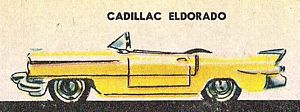 |
Subject: Premier Model Kit Box
View Cadillac Eldorado Drawing - 186KB |
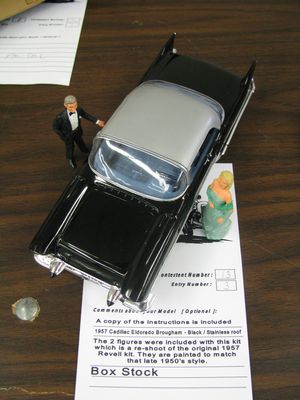 |
Subject: 1957 Cadillac Eldorado Brougham Scale Model
Photographer: Bill Crittenden Event: 2010 Cedarville Model Car Contest and Swap Meet View 1957 Cadillac Eldorado Brougham Model - 3,560KB |
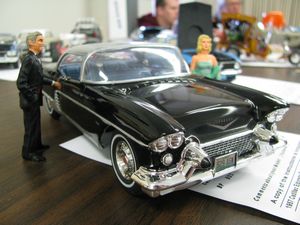 |
Subject: 1957 Cadillac Eldorado Brougham Scale Model
Photographer: Bill Crittenden Event: 2010 Cedarville Model Car Contest and Swap Meet View 1957 Cadillac Eldorado Brougham Model - 3,446KB |
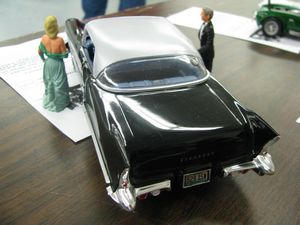 |
Subject: 1957 Cadillac Eldorado Brougham Scale Model
Photographer: Bill Crittenden Event: 2010 Cedarville Model Car Contest and Swap Meet View 1957 Cadillac Eldorado Brougham Model - 3,317KB |
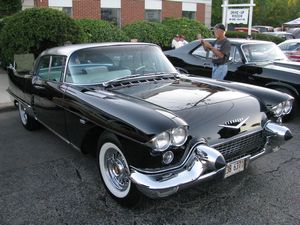 |
Subject: 1958 Cadillac Eldorado Brougham
Photographer: Bill Crittenden Event: Green Street Cruise Night: August 27, 2012 View photo of 1958 Cadillac Eldorado Brougham - 4.9MB |
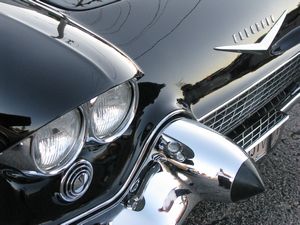 |
Subject: 1958 Cadillac Eldorado Brougham
Photographer: Bill Crittenden Event: Green Street Cruise Night: August 27, 2012 View photo of 1958 Cadillac Eldorado Brougham - 4.1MB |
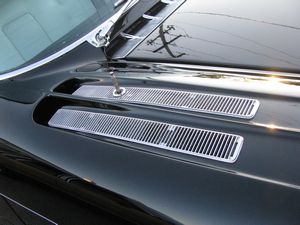 |
Subject: 1958 Cadillac Eldorado Brougham
Photographer: Bill Crittenden Event: Green Street Cruise Night: August 27, 2012 View photo of 1958 Cadillac Eldorado Brougham - 4.2MB |
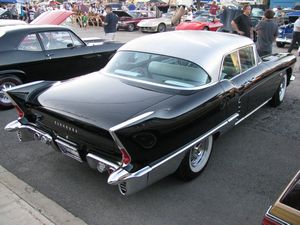 |
Subject: 1958 Cadillac Eldorado Brougham
Photographer: Bill Crittenden Event: Green Street Cruise Night: August 27, 2012 View photo of 1958 Cadillac Eldorado Brougham - 4.5MB |
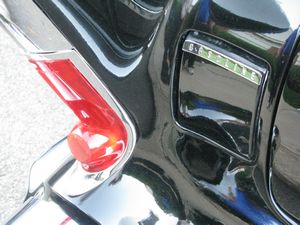 |
Subject: 1958 Cadillac Eldorado Brougham
Photographer: Bill Crittenden Event: Green Street Cruise Night: August 27, 2012 View photo of 1958 Cadillac Eldorado Brougham - 3.7MB |
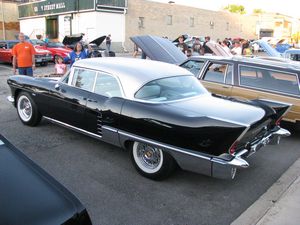 |
Subject: 1958 Cadillac Eldorado Brougham
Photographer: Bill Crittenden Event: Green Street Cruise Night: August 27, 2012 View photo of 1958 Cadillac Eldorado Brougham - 4.3MB |
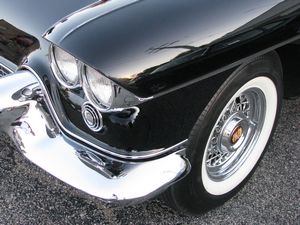 |
Subject: 1958 Cadillac Eldorado Brougham
Photographer: Bill Crittenden Event: Green Street Cruise Night: August 27, 2012 View photo of 1958 Cadillac Eldorado Brougham - 4.2MB |
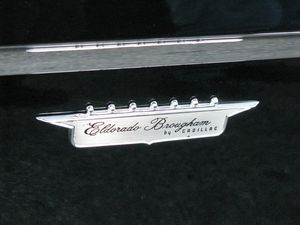 |
Subject: 1958 Cadillac Eldorado Brougham
Photographer: Bill Crittenden Event: Green Street Cruise Night: August 27, 2012 View photo of 1958 Cadillac Eldorado Brougham - 3.5MB |
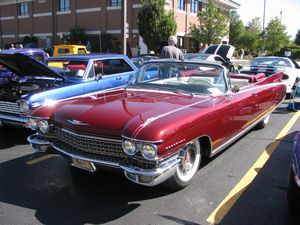 |
Subject: 1960 Cadillac Eldorado
Photographer: Bill Crittenden Event: 2012 Schaumburg Bank & Trust Car Show View photo of 1960 Cadillac Eldorado - 4.5MB |
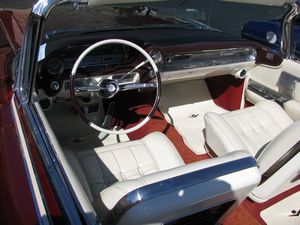 |
Subject: 1960 Cadillac Eldorado
Photographer: Bill Crittenden Event: 2012 Schaumburg Bank & Trust Car Show View photo of 1960 Cadillac Eldorado - 3.2MB |
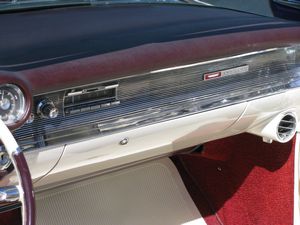 |
Subject: 1960 Cadillac Eldorado
Photographer: Bill Crittenden Event: 2012 Schaumburg Bank & Trust Car Show View photo of 1960 Cadillac Eldorado - 3.8MB |
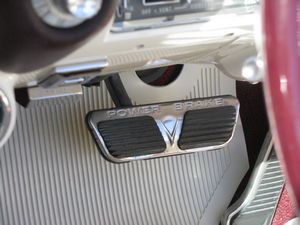 |
Subject: 1960 Cadillac Eldorado
Photographer: Bill Crittenden Event: 2012 Schaumburg Bank & Trust Car Show View photo of 1960 Cadillac Eldorado - 3.7MB |
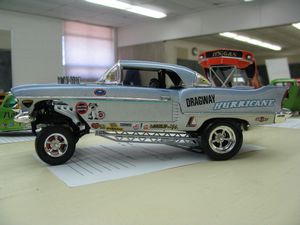 |
Subject: Dragway Hurricane Cadillac Eldorado Scale Model
Photographer: Bill Crittenden Event: 2012 Cedarville Model Car Contest and Swap Meet View photo of Dragway Hurricane Cadillac Eldorado - 2.3MB |
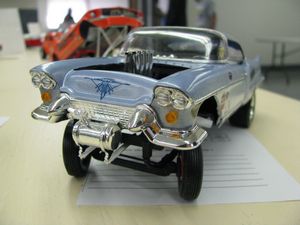 |
Subject: Dragway Hurricane Cadillac Eldorado Scale Model
Photographer: Bill Crittenden Event: 2012 Cedarville Model Car Contest and Swap Meet View photo of Dragway Hurricane Cadillac Eldorado - 2.3MB |
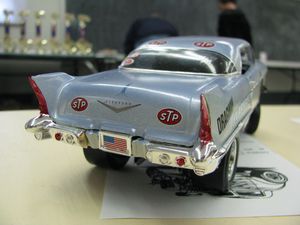 |
Subject: Dragway Hurricane Cadillac Eldorado Scale Model
Photographer: Bill Crittenden Event: 2012 Cedarville Model Car Contest and Swap Meet View photo of Dragway Hurricane Cadillac Eldorado - 2.3MB |
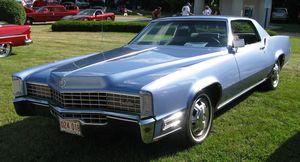 |
Subject: 1968 Cadillac Eldorado
Photographer: Bill Crittenden Event: Green Street Cruise Night: July 4, 2011 View photo of 1968 Cadillac Eldorado - 2,196KB |
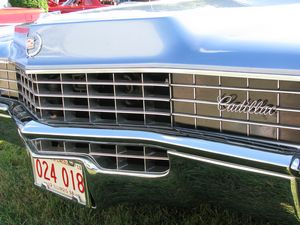 |
Subject: 1968 Cadillac Eldorado
Photographer: Bill Crittenden Event: Green Street Cruise Night: July 4, 2011 View photo of 1968 Cadillac Eldorado - 3,678KB |
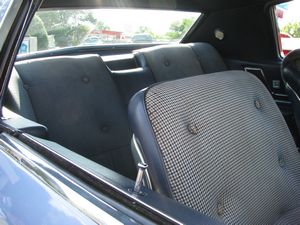 |
Subject: 1968 Cadillac Eldorado
Photographer: Bill Crittenden Event: Green Street Cruise Night: July 4, 2011 View photo of 1968 Cadillac Eldorado - 4,430KB |
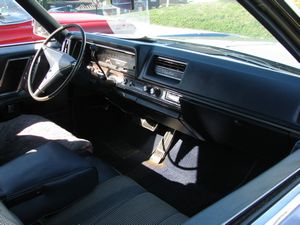 |
Subject: 1968 Cadillac Eldorado
Photographer: Bill Crittenden Event: Green Street Cruise Night: July 4, 2011 View photo of 1968 Cadillac Eldorado - 3,343KB |
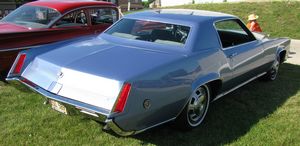 |
Subject: 1968 Cadillac Eldorado
Photographer: Bill Crittenden Event: Green Street Cruise Night: July 4, 2011 View photo of 1968 Cadillac Eldorado - 2,358KB |
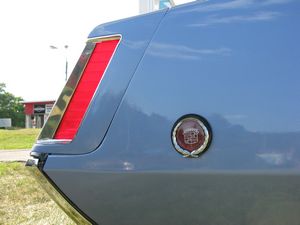 |
Subject: 1968 Cadillac Eldorado
Photographer: Bill Crittenden Event: Green Street Cruise Night: July 4, 2011 View photo of 1968 Cadillac Eldorado - 3,067KB |
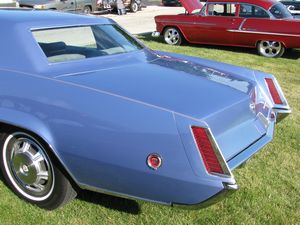 |
Subject: 1968 Cadillac Eldorado
Photographer: Bill Crittenden Event: Green Street Cruise Night: July 4, 2011 View photo of 1968 Cadillac Eldorado - 2,959KB |
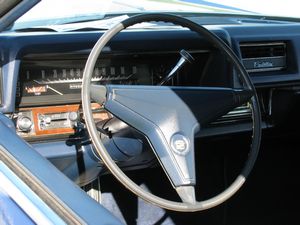 |
Subject: 1968 Cadillac Eldorado
Photographer: Bill Crittenden Event: Green Street Cruise Night: July 4, 2011 View photo of 1968 Cadillac Eldorado - 3,103KB |
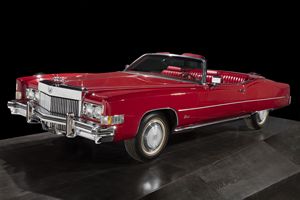 |
Subject: Chuck Berry's 1973 Cadillac Eldorado Convertible
Source: Smithsonian Open Access Location: Collection of the Smithsonian National Museum of African American History and Culture, Donation of Charles E. Berry License: Public Domain Caption: The car is part of Berry’s personal fleet of Cadillacs and was driven during the filming of Hail! Hail! Rock ’n’ Roll, a 1987 documentary that chronicles two 1986 concerts. View photo of Chuck Berry's 1973 Cadillac Eldorado Convertible - 8.7MB |
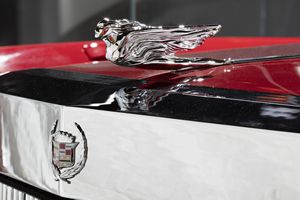 |
Subject: Chuck Berry's 1973 Cadillac Eldorado Convertible
Source: Smithsonian Open Access Location: Collection of the Smithsonian National Museum of African American History and Culture, Donation of Charles E. Berry License: Public Domain Caption: The car is part of Berry’s personal fleet of Cadillacs and was driven during the filming of Hail! Hail! Rock ’n’ Roll, a 1987 documentary that chronicles two 1986 concerts. View photo of Chuck Berry's 1973 Cadillac Eldorado Convertible - 9.5MB |
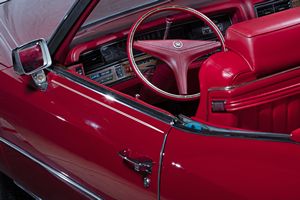 |
Subject: Chuck Berry's 1973 Cadillac Eldorado Convertible
Source: Smithsonian Open Access Location: Collection of the Smithsonian National Museum of African American History and Culture, Donation of Charles E. Berry License: Public Domain Caption: The car is part of Berry’s personal fleet of Cadillacs and was driven during the filming of Hail! Hail! Rock ’n’ Roll, a 1987 documentary that chronicles two 1986 concerts. View photo of Chuck Berry's 1973 Cadillac Eldorado Convertible - 9.8MB |
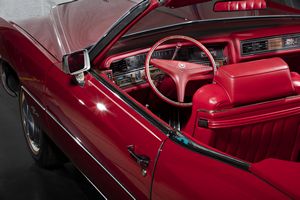 |
Subject: Chuck Berry's 1973 Cadillac Eldorado Convertible
Source: Smithsonian Open Access Location: Collection of the Smithsonian National Museum of African American History and Culture, Donation of Charles E. Berry License: Public Domain Caption: The car is part of Berry’s personal fleet of Cadillacs and was driven during the filming of Hail! Hail! Rock ’n’ Roll, a 1987 documentary that chronicles two 1986 concerts. View photo of Chuck Berry's 1973 Cadillac Eldorado Convertible - 9.2MB |
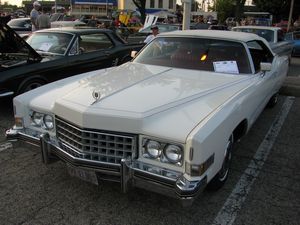 |
Subject: 1973 Cadillac Eldorado
Photographer: Bill Crittenden Event: Green Street Cruise Night: July 21, 2014 View photo of 1973 Cadillac Eldorado - 2.1MB |
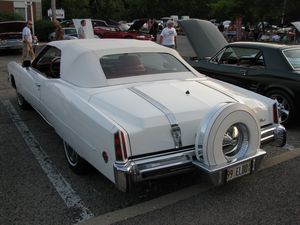 |
Subject: 1973 Cadillac Eldorado
Photographer: Bill Crittenden Event: Green Street Cruise Night: July 21, 2014 View photo of 1973 Cadillac Eldorado - 2.0MB |
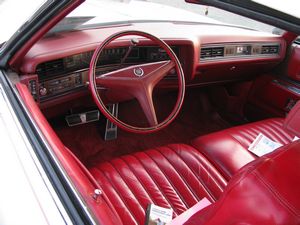 |
Subject: 1973 Cadillac Eldorado
Photographer: Bill Crittenden Event: Green Street Cruise Night: July 21, 2014 View photo of 1973 Cadillac Eldorado - 1.9MB |
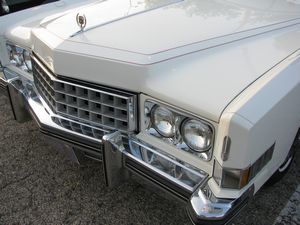 |
Subject: 1973 Cadillac Eldorado
Photographer: Bill Crittenden Event: Green Street Cruise Night: July 21, 2014 View photo of 1973 Cadillac Eldorado - 2.1MB |
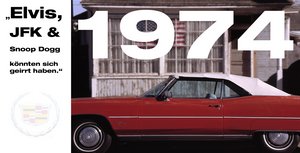 |
Subject: 1974 Cadillac Eldorado Convertible
Source: Route 66: An American (bad)Dream View photo of 1974 Cadillac Eldorado Convertible - 447KB |
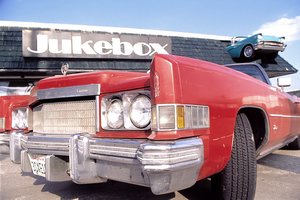 |
Subject: 1974 Cadillac Eldorado Convertible
Source: Route 66: An American (bad)Dream View photo of 1974 Cadillac Eldorado Convertible - 2,035KB |
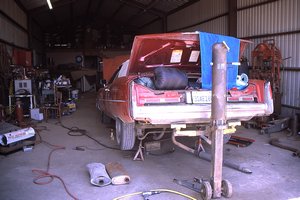 |
Subject: 1974 Cadillac Eldorado Convertible
Source: Route 66: An American (bad)Dream Caption: Breakdown in New Mexico. View photo of 1974 Cadillac Eldorado Convertible - 2,271KB |
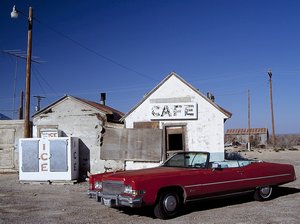 |
Subject: 1974 Cadillac Eldorado Convertible
Source: Route 66: An American (bad)Dream View photo of 1974 Cadillac Eldorado Convertible - 1,663KB |
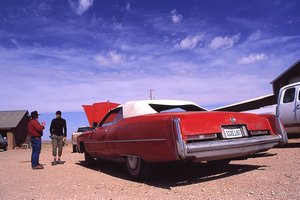 |
Subject: 1974 Cadillac Eldorado Convertible
Source: Route 66: An American (bad)Dream View photo of 1974 Cadillac Eldorado Convertible - 2,471KB |
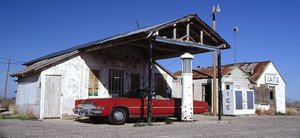 |
Subject: 1974 Cadillac Eldorado Convertible
Source: Route 66: An American (bad)Dream View photo of 1974 Cadillac Eldorado Convertible - 1,799KB |
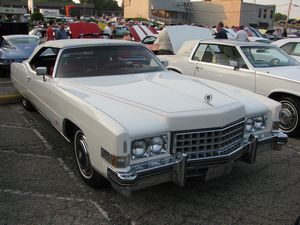 |
Subject: Cadillac Eldorado
Photographer: Bill Crittenden Event: Green Street Cruise Night: June 6, 2011 View photo of Cadillac Eldorado - 3,574KB |
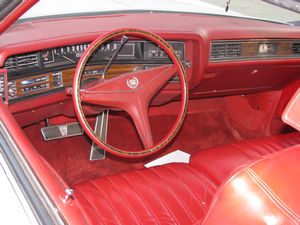 |
Subject: Cadillac Eldorado
Photographer: Bill Crittenden Event: Green Street Cruise Night: June 6, 2011 View photo of Cadillac Eldorado - 3,574KB |
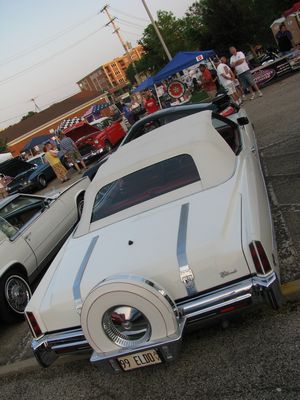 |
Subject: Cadillac Eldorado
Photographer: Bill Crittenden Event: Green Street Cruise Night: June 6, 2011 View photo of Cadillac Eldorado - 3,574KB |
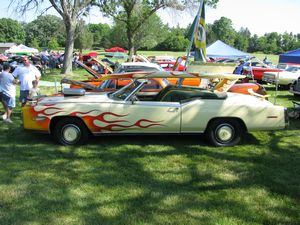 |
Subject: "Packer Mobile" Cadillac Eldorado
Photographer: Bill Crittenden Event: 2013 The Cars Time Forgot View photo of "Packer Mobile" Cadillac Eldorado - 5.0MB |
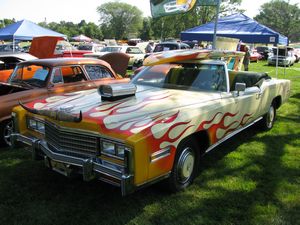 |
Subject: "Packer Mobile" Cadillac Eldorado
Photographer: Bill Crittenden Event: 2013 The Cars Time Forgot View photo of "Packer Mobile" Cadillac Eldorado - 4.0MB |
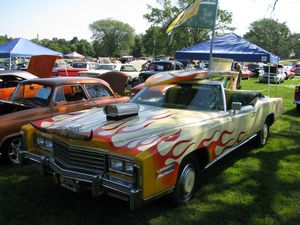 |
Subject: "Packer Mobile" Cadillac Eldorado
Photographer: Bill Crittenden Event: 2013 The Cars Time Forgot View photo of "Packer Mobile" Cadillac Eldorado - 3.7MB |
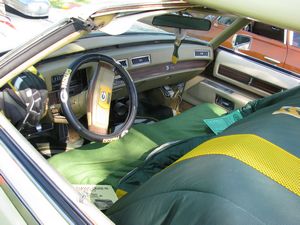 |
Subject: "Packer Mobile" Cadillac Eldorado
Photographer: Bill Crittenden Event: 2013 The Cars Time Forgot View photo of "Packer Mobile" Cadillac Eldorado - 3.8MB |
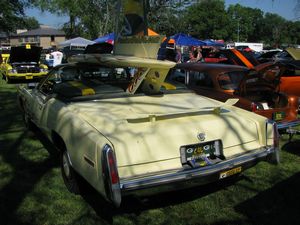 |
Subject: "Packer Mobile" Cadillac Eldorado
Photographer: Bill Crittenden Event: 2013 The Cars Time Forgot View photo of "Packer Mobile" Cadillac Eldorado - 3.5MB |
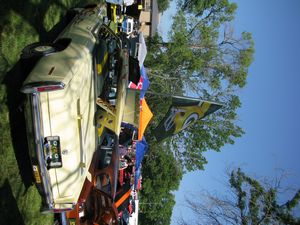 |
Subject: "Packer Mobile" Cadillac Eldorado
Photographer: Bill Crittenden Event: 2013 The Cars Time Forgot View photo of "Packer Mobile" Cadillac Eldorado - 4.3MB |
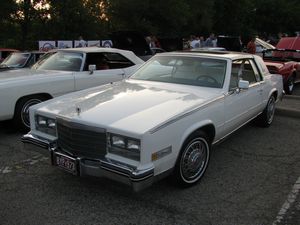 |
Subject: 1984 Cadillac Eldorado Biarritz
Photographer: Bill Crittenden Event: Green Street Cruise Night: June 6, 2011 View photo of 1984 Cadillac Eldorado Biarritz - 3,459KB |
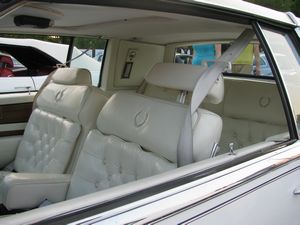 |
Subject: 1984 Cadillac Eldorado Biarritz
Photographer: Bill Crittenden Event: Green Street Cruise Night: June 6, 2011 View photo of 1984 Cadillac Eldorado Biarritz Interior - 2,972KB |
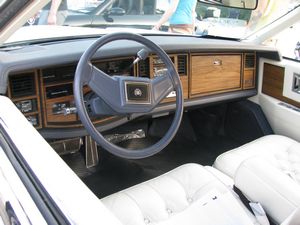 |
Subject: 1984 Cadillac Eldorado Biarritz
Photographer: Bill Crittenden Event: Green Street Cruise Night: June 6, 2011 View photo of 1984 Cadillac Eldorado Biarritz Dashboard - 3,057KB |
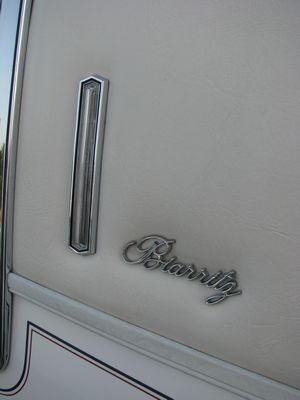 |
Subject: 1984 Cadillac Eldorado Biarritz
Photographer: Bill Crittenden Event: Green Street Cruise Night: June 6, 2011 View photo of 1984 Cadillac Eldorado Biarritz - 3,076KB |
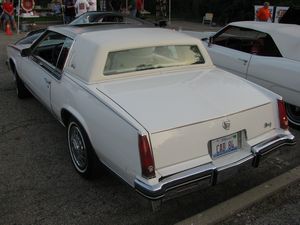 |
Subject: 1984 Cadillac Eldorado Biarritz
Photographer: Bill Crittenden Event: Green Street Cruise Night: June 6, 2011 View photo of 1984 Cadillac Eldorado Biarritz - 3,277KB |
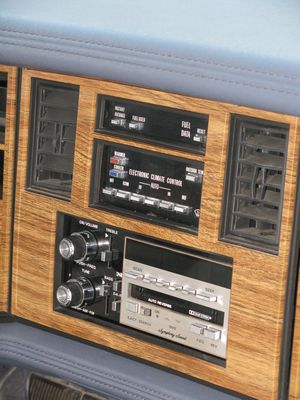 |
Subject: 1984 Cadillac Eldorado Biarritz
Photographer: Bill Crittenden Event: Green Street Cruise Night: June 6, 2011 View photo of 1984 Cadillac Eldorado Biarritz Radio - 4,231KB |
| Year | Total | Biarritz | Brougham | Coupe | Convertible |
|---|---|---|---|---|---|
| 1953 | 532 | ||||
| 1954 | 2,150 | ||||
| 1957 | 1,800 | 400 | |||
| 1958 | 815 | ||||
| 1959 | 1,320 | ||||
| 1961 | 1,450 | ||||
| 1967 | 17,930 | ||||
| 1968 | 24,528 | ||||
| 1970 | 23,842 | ||||
| 1971 | 27,386 | 20,586 | 6,800 | ||
| 1972 | 40,074 | 32,099 | 7,975 | ||
| 1984 | 77,806 | 74,506 | 3,300 |
| Price | $7,750 |
| Engine | V8 |
| Engine Displacement | 331 cu. in. |
| Valvetrain | OHV |
| Horsepower | 210 bhp @ 4150 rpm |
| Torque | 330 lb-ft @ 2700 rpm |
| Wheelbase | 126" |
| Weight | 4,800 lbs. |
| Biarritz | Brougham | |
|---|---|---|
| Price | $7,286 | $13,074 |
| Engine | V8 | V8 |
| Engine Displacement | 365 cu. in. | 365 cu. in. |
| Valvetrain | OHV | OHV |
| Horsepower | 325 bhp @ 4800 rpm | 325 bhp @ 4800 rpm |
| Torque | 300 lb-ft @ 2800 rpm | 300 lb-ft @ 2800 rpm |
| Wheelbase | 126" | 126" |
| Price | $7,500 |
| Engine | V8 |
| Engine Displacement | 365 cu. in. |
| Valvetrain | OHV |
| Horsepower | 335 bhp @ 4800 rpm |
| Torque | 405 lb-ft @ 3400 rpm |
| Wheelbase | 129.5" |
| Price | $6,477 |
| Engine | V8 |
| Engine Displacement | 390 cu. in. |
| Valvetrain | OHV |
| Horsepower | 325 bhp @ 4800 rpm |
| Torque | 430 lb-ft @ 3400 rpm |
| Wheelbase | 129.5" |
| Coupe | Convertible | |
|---|---|---|
| Price | $7,383 | $7,751 |
| Engine | V8 | V8 |
| Engine Displacement | 500 cu. in. | 500 cu. in. |
| Valvetrain | OHV | OHV |
| Horsepower | 365 bhp @ 4000 rpm | 365 bhp @ 4000 rpm |
| Torque | 235 lb-ft @ 3800 rpm | 235 lb-ft @ 3800 rpm |
| Wheelbase | 126.3" | 126.3" |
| Coupe | Convertible | |
|---|---|---|
| Price | $7,360 | $7,681 |
| Engine | V8 | V8 |
| Engine Displacement | 500 cu. in. | 500 cu. in. |
| Valvetrain | OHV | OHV |
| Horsepower | 235 bhp @ 3800 rpm | 235 bhp @ 3800 rpm |
| Torque | 385 lb-ft @ 2400 rpm | 385 lb-ft @ 2400 rpm |
| Wheelbase | 126.3" | 126.3" |
| Date | Document Name & Details | Documents |
|---|---|---|
| classified date 1994 | On-Site Air Bag Investigation 1990 Cadillac Eldorado, 2-door coupe National Highway Traffic Safety Administration | PDF - 47.6MB - 323 pages |
| Date | Article | Author/Source |
|---|---|---|
| 1 January 2014 | Reference Desk: 1962 Ford Galaxie Scale Model & 1959 Cadillac Brougham | Bill Crittenden |
